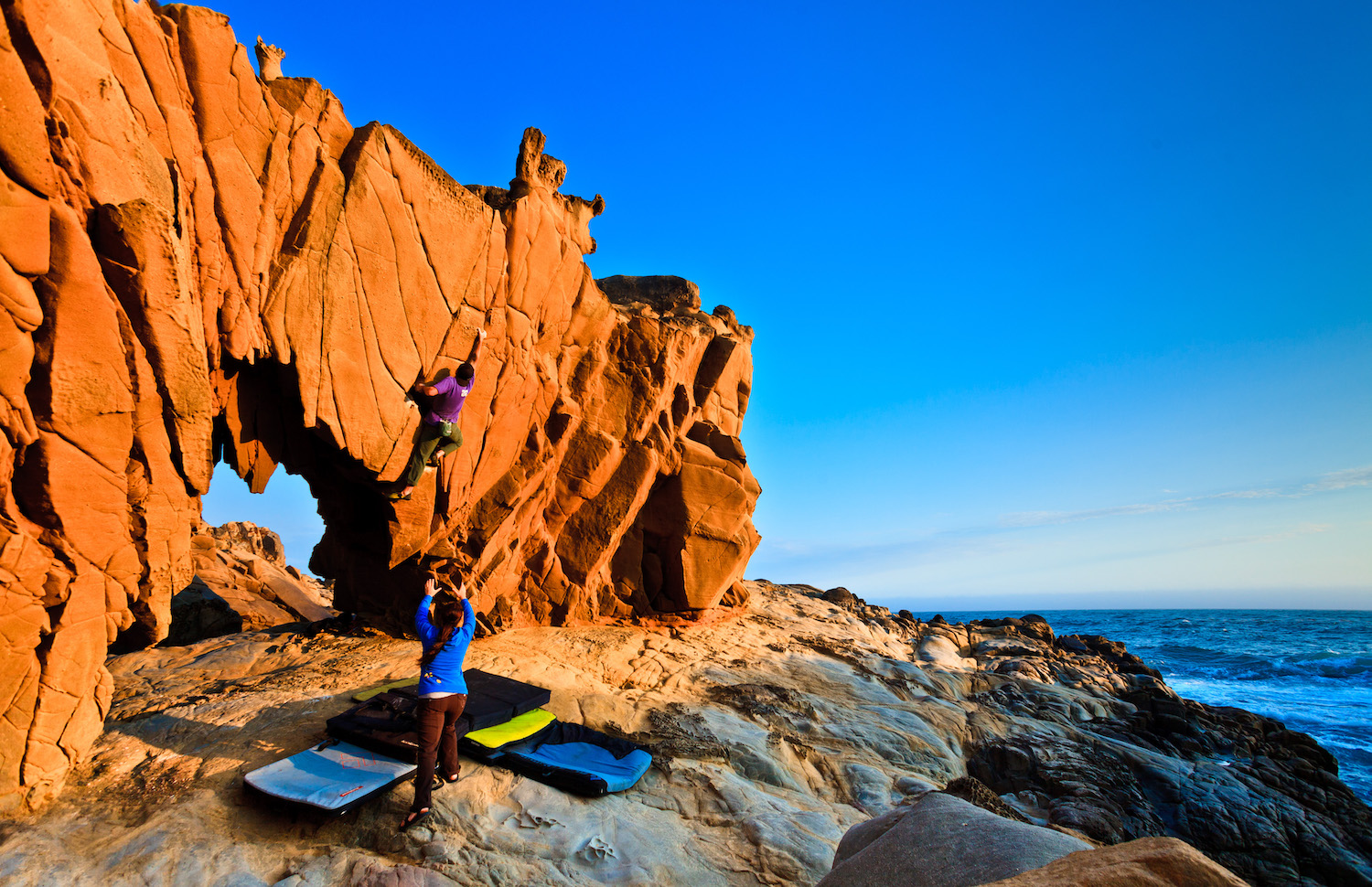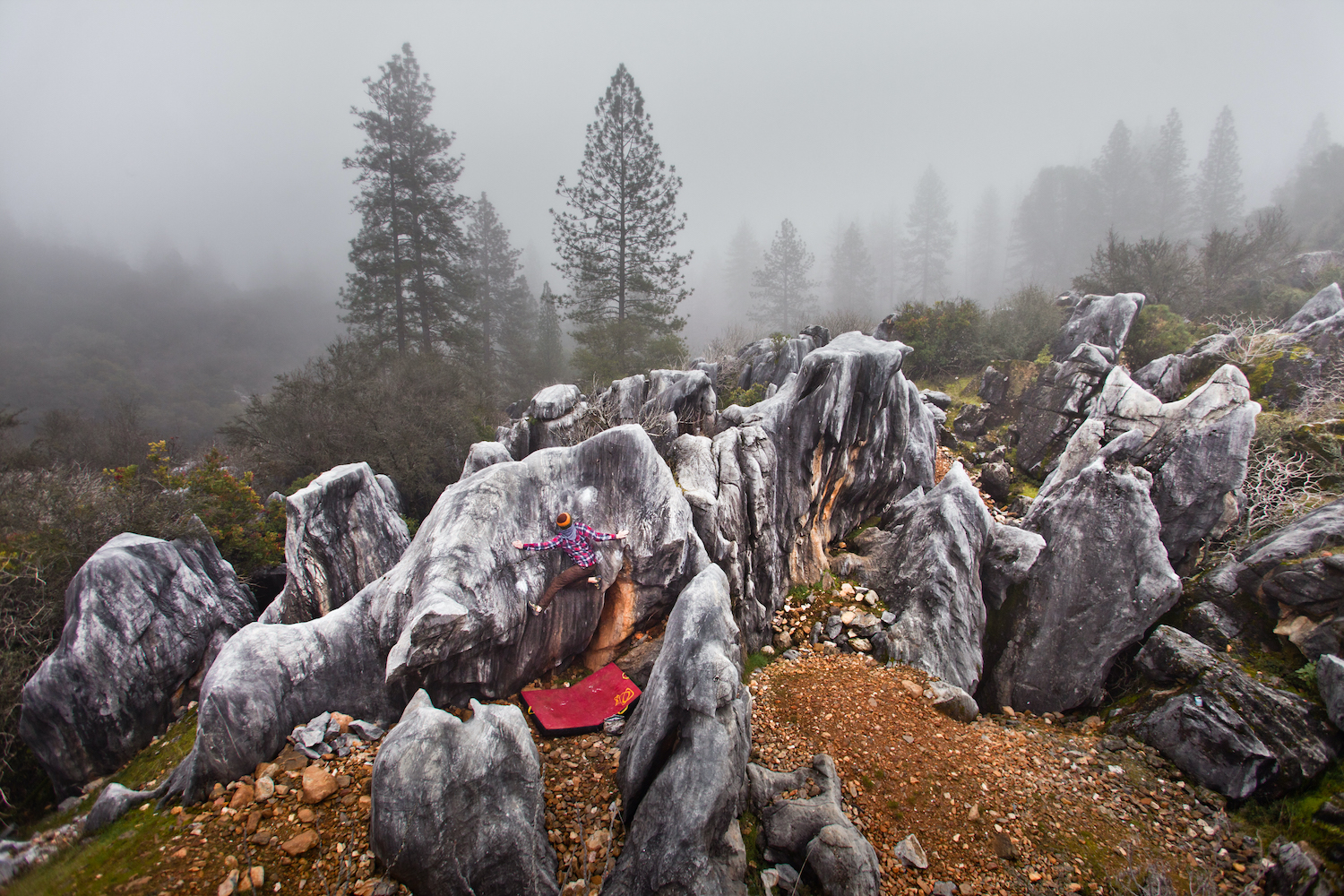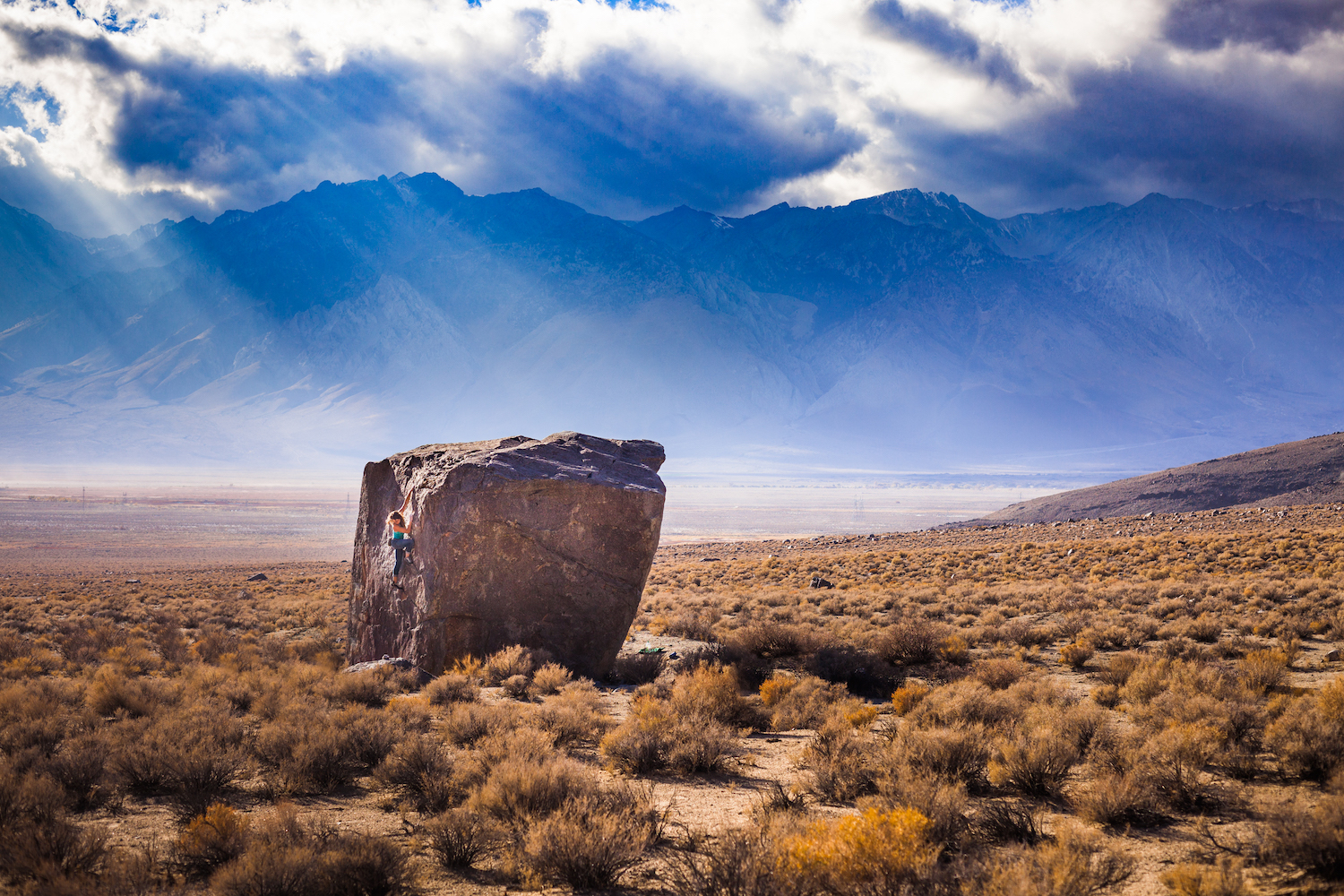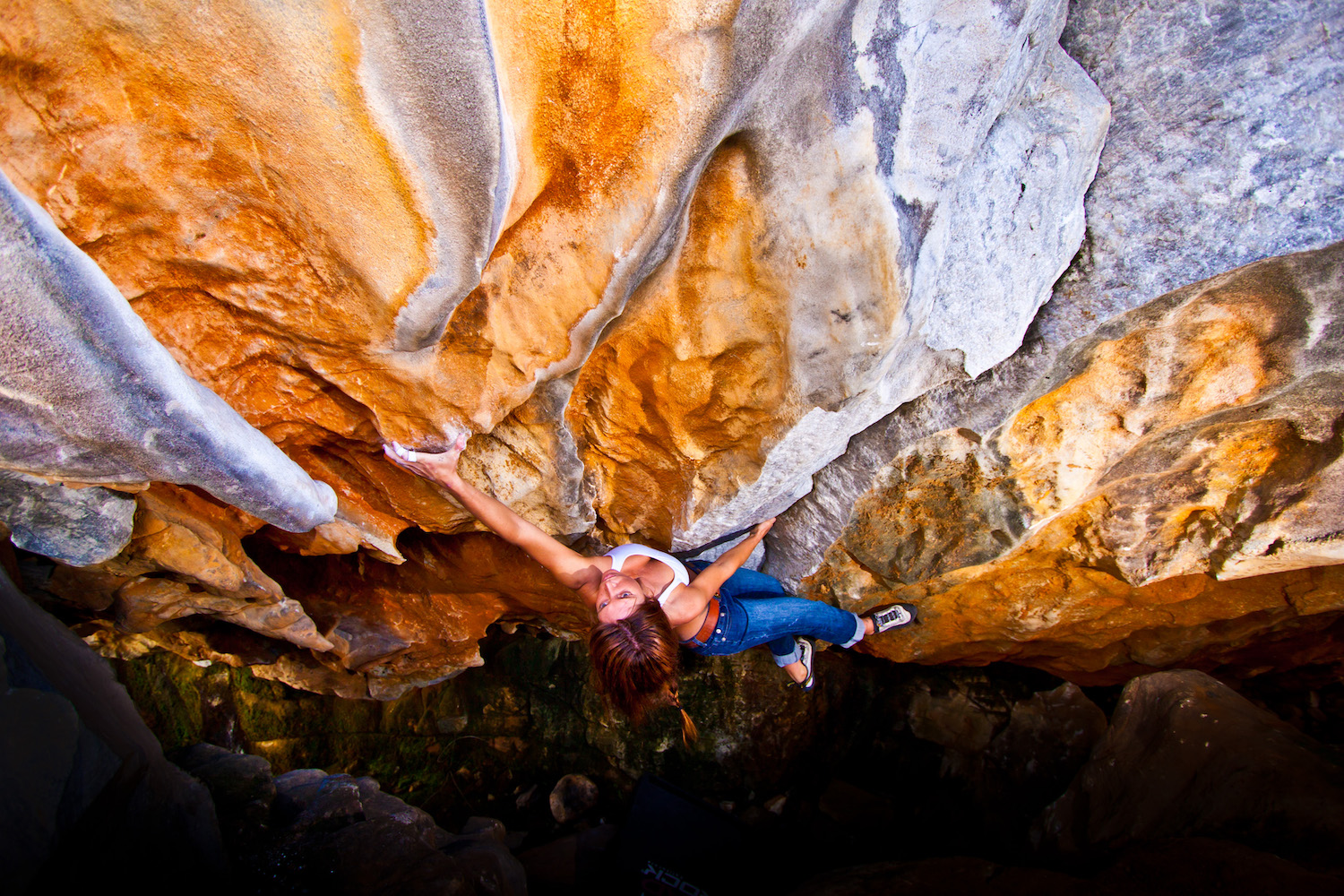Dean Fleming is one of our favorite people and the founder and and editor of one of our favorite magazines, California Climber. Once the youngest certified professional climbing guide in the country, he eventually combined his love of writing, photography, earth science, and rock climbing into a career of sharing his stoke and expertise through publishing. We caught up with Dean to learn more about how California Climber came to be, and how things are looking in the time of COVID.
When did you start California Climber Magazine?
The first issue took a year to create. We started working on it in Summer 2011 and finally printed it in Summer 2012.
Why did you start California Climber?
I first had the idea for the magazine at the Red Rocks campground outside of Vegas. Some friends and I were talking about climbing magazines and I mentioned that the only articles that I was interested in were about places in California—I always liked looking at climbing photos from around the globe, but I was never really excited about exotic locations because I knew I’d never be able to afford to travel to those places. But if an article was about a place that I could go visit on a tank of gas, I was very interested.
I was never really excited about exotic locations because I knew I’d never be able to afford to travel to those places.
When everyone began to sympathize with me and express that they felt the same way, we started talking about an entire magazine that was just focused on climbing in California. We also talked about how tired we were of seeing the same three California destinations (Joshua Tree, Bishop, Yosemite) in the big international climbing magazines, and how if there were a magazine that focused only on California it would be able to showcase all the other amazing areas the state has to offer.
Once the idea happened I knew I had to try to do it. I knew that if I didn’t do it that someone else would do it and I would always be that guy that said things like, “You know I had that exact same idea…” and I just didn’t want to be that person.

You co-authored the Columbia Bouldering guidebook—did you get to use any skills you learned in that process on the magazine?
Absolutely. Even though the Columbia Bouldering guidebook is possibly the worst guidebook in existence, just knowing that you can create a book on a laptop, send it to the printer, and then actually hold something physical in your hands is very inspiring. Doing all the interviews and taking the photos for the guidebook was also a great learning experience, but not really enough to prepare me for running a quarterly magazine. Sometimes I think college would have been useful.
What are some publications or people that inspired California Climber?
I grew up obsessively reading all the big magazines like Climbing and Rock & Ice, and that helped with the framework, but as I started working on California Climber it was people like Jerry Dodrill, Fitz Cahall, Brendan Leonard, and especially Jim Thornburg who really inspired me to create a meaningful, high quality publication. These people also provided me with the information I needed to operate a business in the climbing industry, which has certain nuances. Of course California Climber would have never been possible without our Art Director Alton Richardson, who actually knew how to put together a magazine and send it off to the printer.
How has California Climber changed since its beginnings?
In concept and style, California Climber hasn’t really changed that much since its inception, but I do see how Alton has evolved the design really well and kept the magazine looking fresh through the years. The biggest change to the magazine in terms of its editorial content has been a much stronger focus and emphasis on environmental stewardship—we’re really trying harder every issue to portray a message that we need to take care of the places that we visit.

What are some of your biggest challenges?
Because California Climber is free we need to sell a lot of advertising to pay for the cost of printing, distribution, and to pay our contributors for their photos and writing. This is by far the biggest challenge, and for some reason it’s a challenge that I did not foresee being quite so difficult. I really wanted to see California Climber filled with local ads that you’d never see in a big international magazine—local climbing gyms, gear shops and guide services, even advertisements for local guidebooks. We do have some really awesome local advertisers, including Touchstone who has supported us since day one, but the majority of our advertisers are large climbing gear manufacturers who are not based in California.
I still want to work with our local climbing community and support companies and brands that were born here and remain small family-run businesses and I’m still trying very hard to accomplish this. Of course right now one of our largest challenges is COVID-19. With climbing gyms closed in California we lost 80% of our distribution locations and so we haven’t printed an issue since March 2020.

What are some things about the experience that you love now but didn’t expect to like when you started?
I have always loved all of the creative work, but I really dislike advertising—I think it’s a powerful tool that has had some really terrible effects on our society. Unfortunately advertising is a much larger part of my job than I thought it would be. But there are occasions where I get to work with a really good company, a small, local company that I really believe in, and I actually get to help them create ideas and artwork that grow their businesses—in the best cases, we end up helping a small local business that provides an alternative to buying from a large corporation. That is rare but it is very satisfying when it happens.
How has California Climber changed your relationship with climbing?
Aside from being tired all the time, I’m not sure that California Climber has changed my relationship with climbing that much, but being a full-time professional climbing photographer definitely has. In the beginning I would always take my camera to the crag and constantly struggle to get photos and try to climb on the same days. I’ve learned recently that I need to have climbing days without my camera, and really separate those days from “work days,” where I just focus on shooting. With this method I end up with higher quality climbing experiences on my days off and then producing higher quality images on work days. I definitely climb less than I did ten years ago, but I’m still really psyched.

What advice do you have for other people looking to start a publication?
There’s a lot, but perhaps the most important advice I’d give is to make sure that the contributors get paid for their photos, writing, design, etc. To do this one needs to enter the world of advertising, which can be pretty ugly, complicated, and demoralizing. My only editorial advice would be to stick to your instincts—if you like it, or don’t like it, there’s a very good chance the majority of your readers will feel the same way. A lot of people will try to tell you that your readers will enjoy something even though you dislike it—try not to get sucked into believing those kinds of things.
What does the future of California Climber look like? Anything exciting we can look forward to?
Even with COVID going strong and most of our distribution locations closed, we are still on track to start printing and distributing again by Spring 2021, so at least you can look forward to California Climber arriving at gyms (hopefully, if they are open) or in your mailbox (if you have a subscription). And we still have some huge features in the works that we are really excited about—there’s still a ton of destinations in California that we haven’t featured and we’re getting some really good photos in line for some more great content next year.

Thank you, Dean!
You can support California Climber by subscribing for $30/year, or picking up an issue from the gyms when we reopen.

